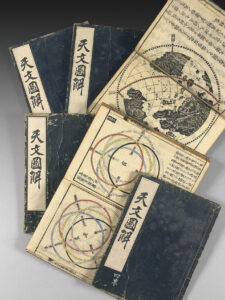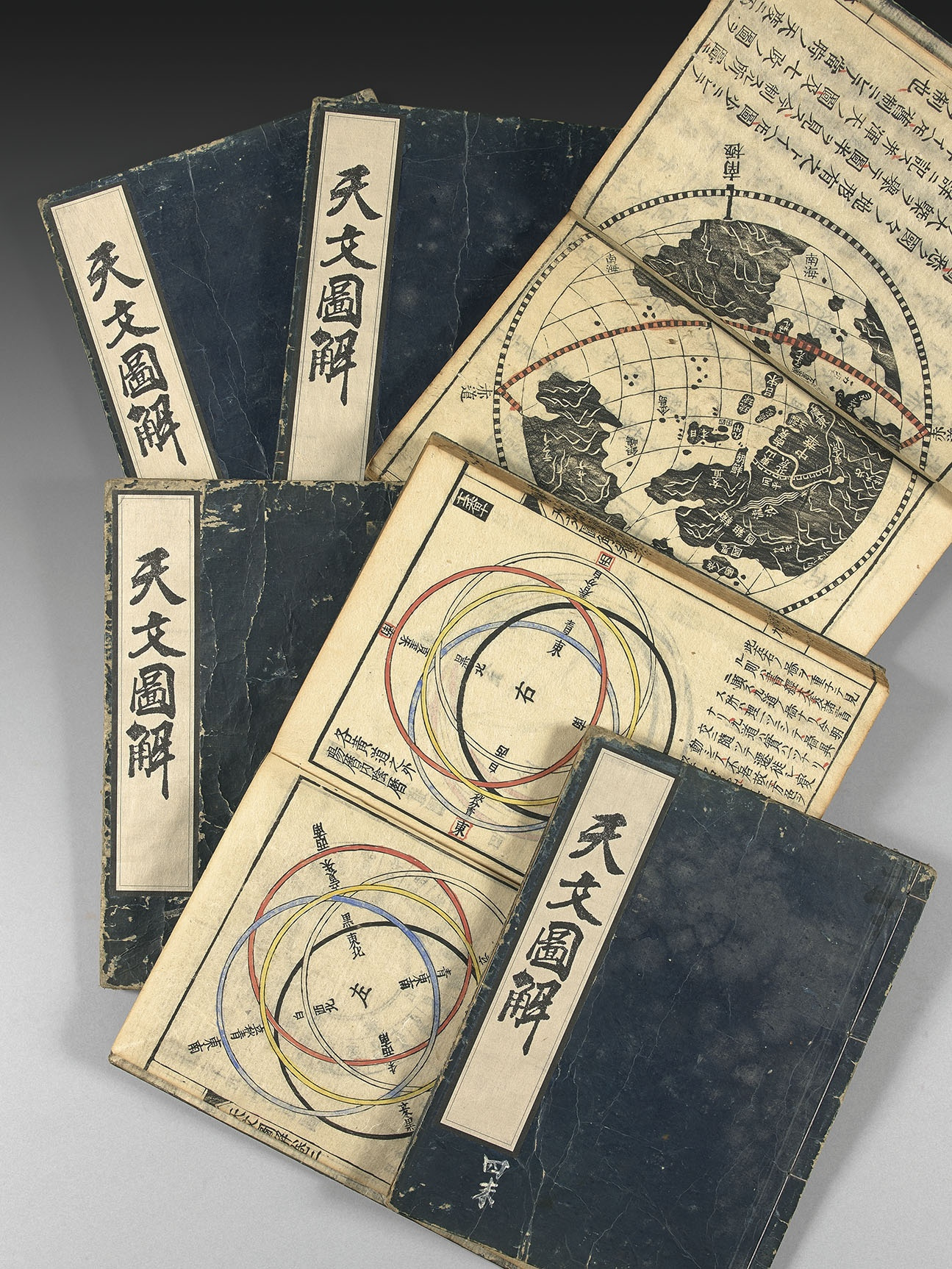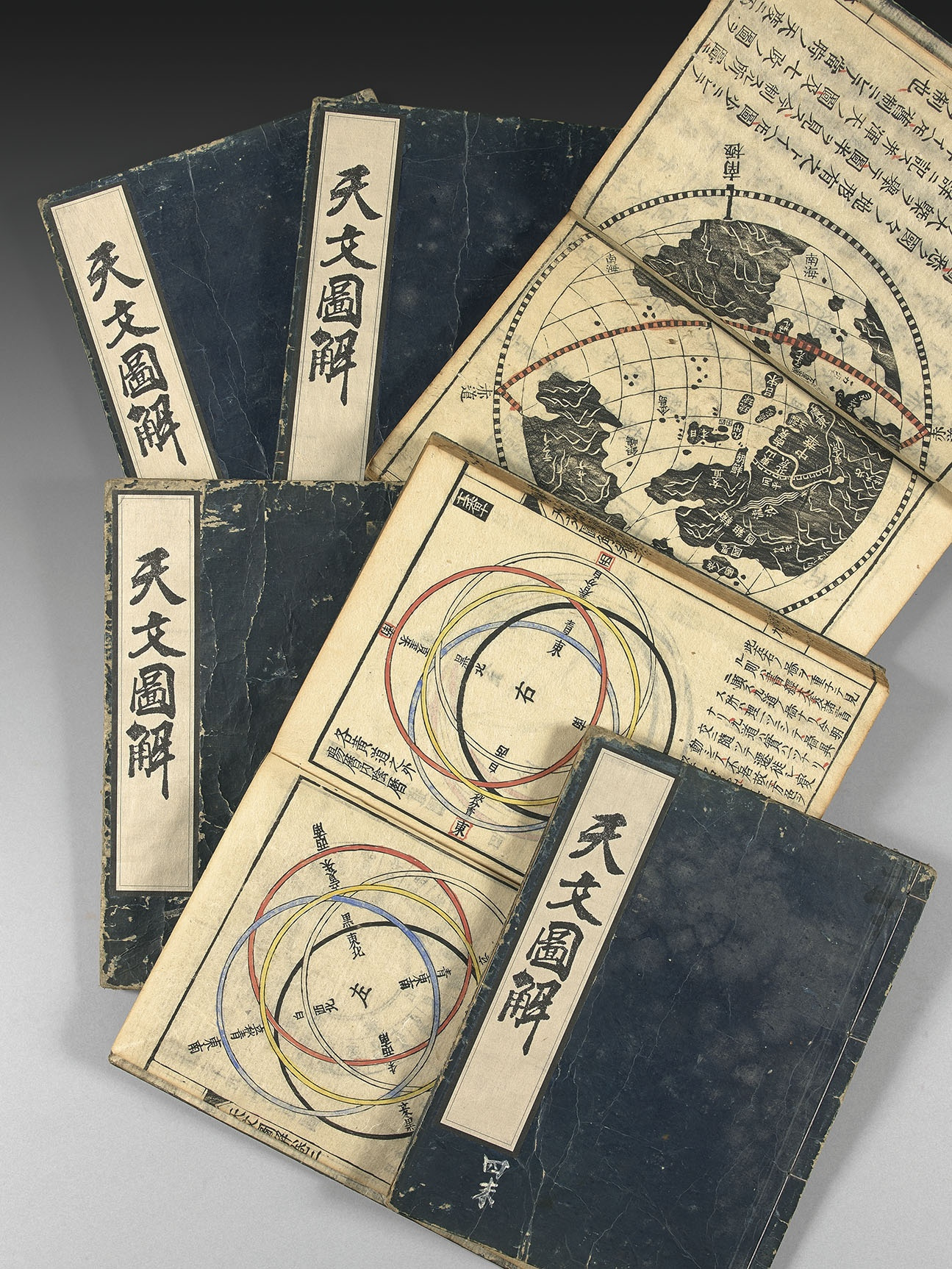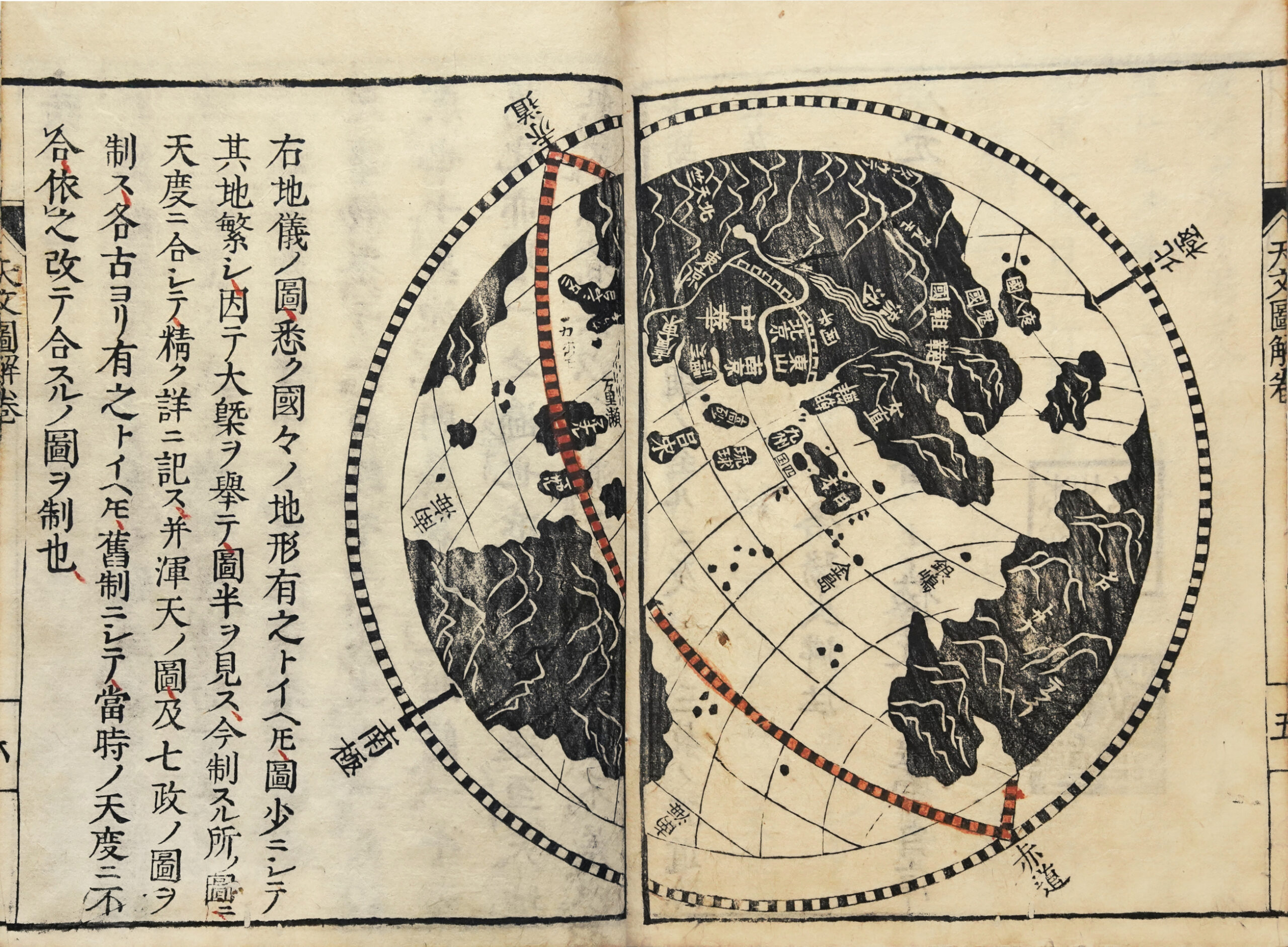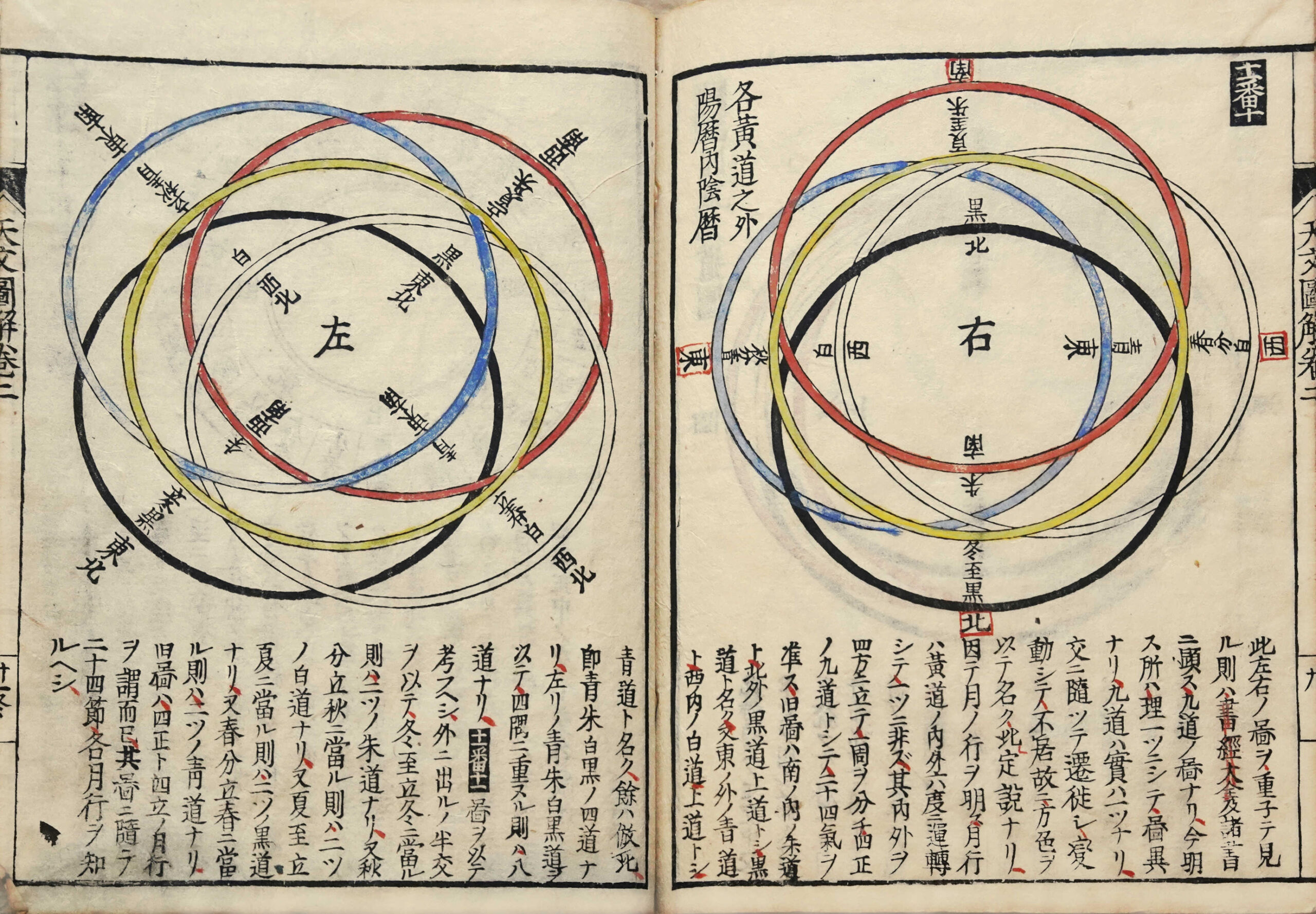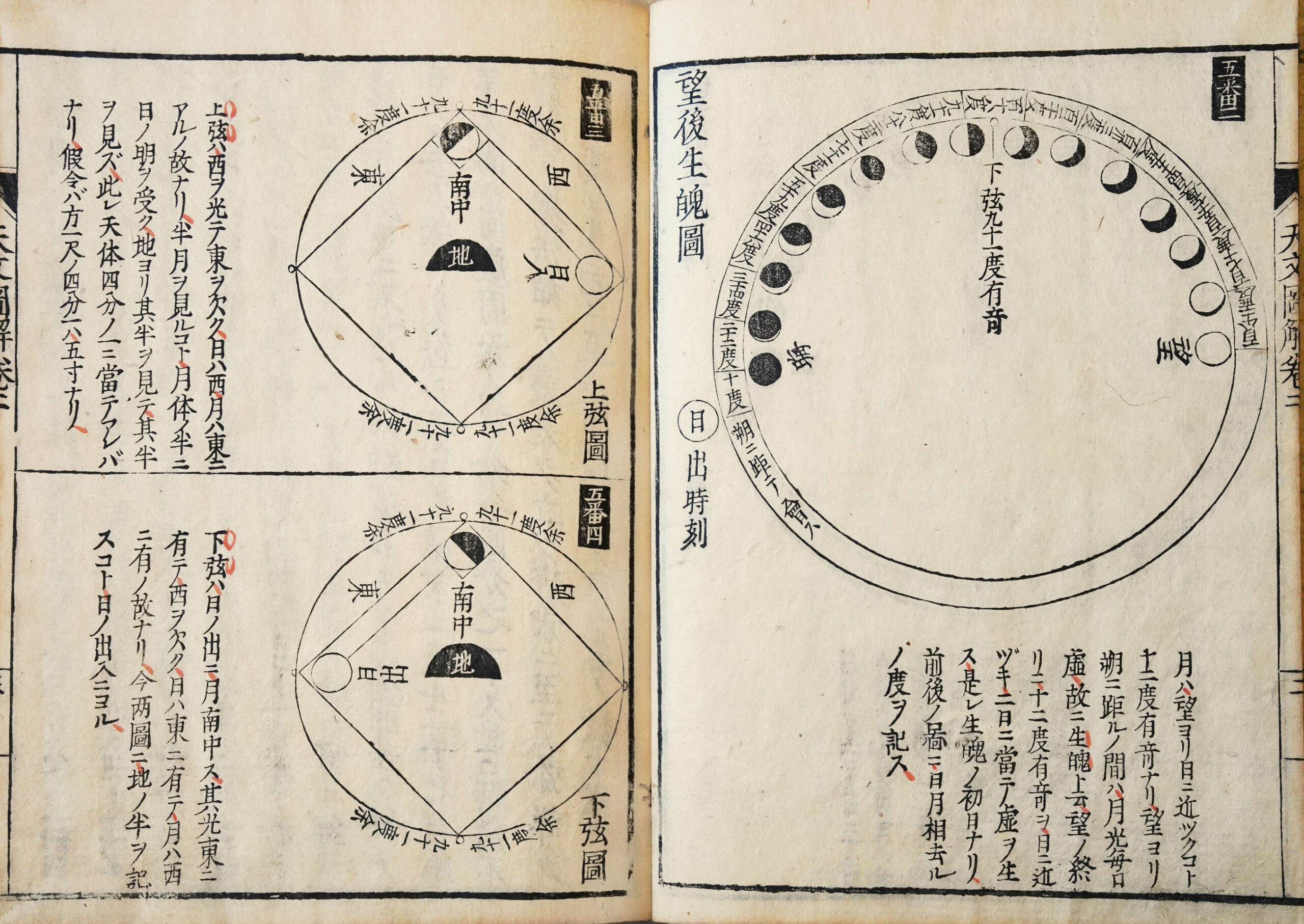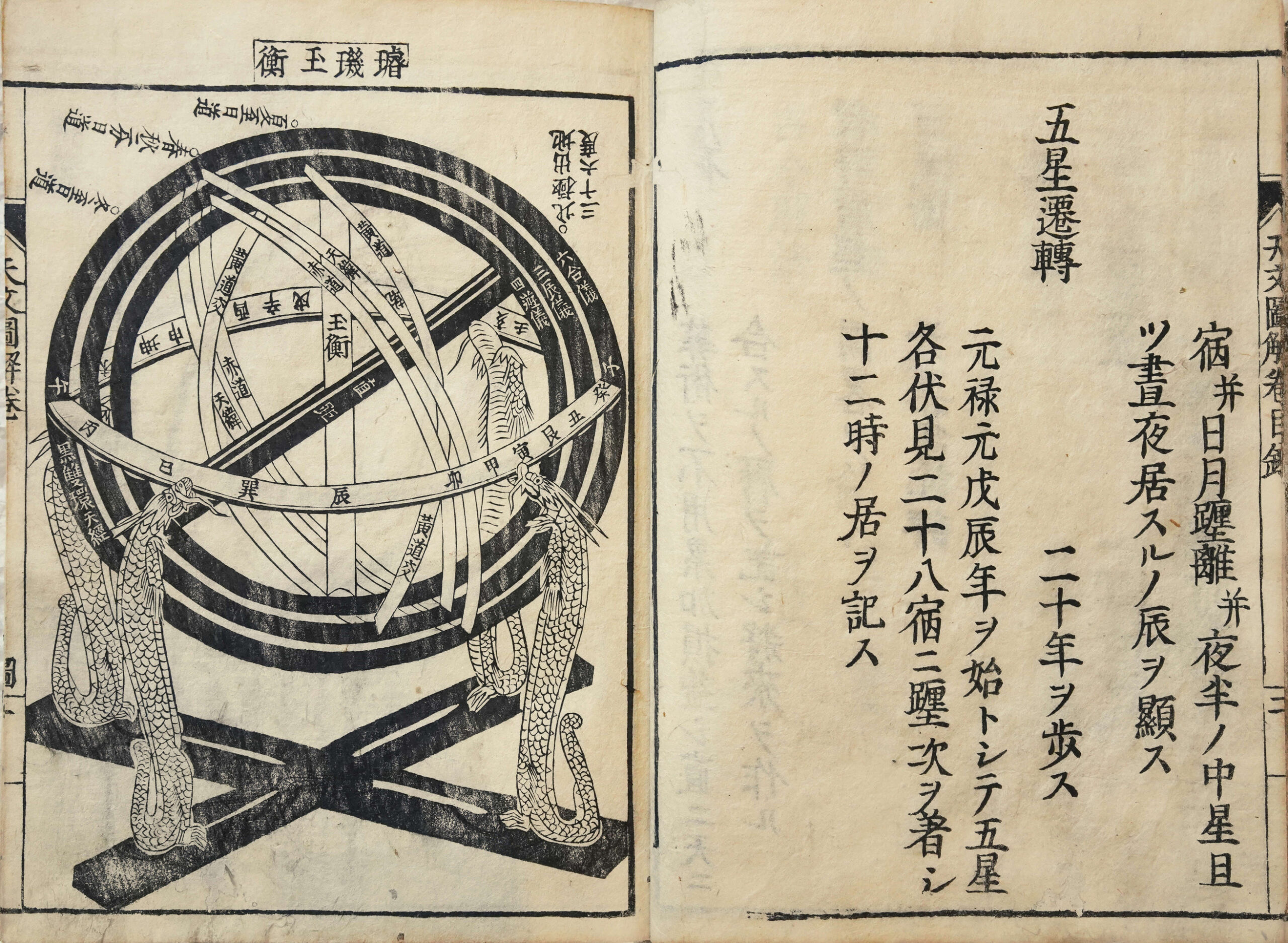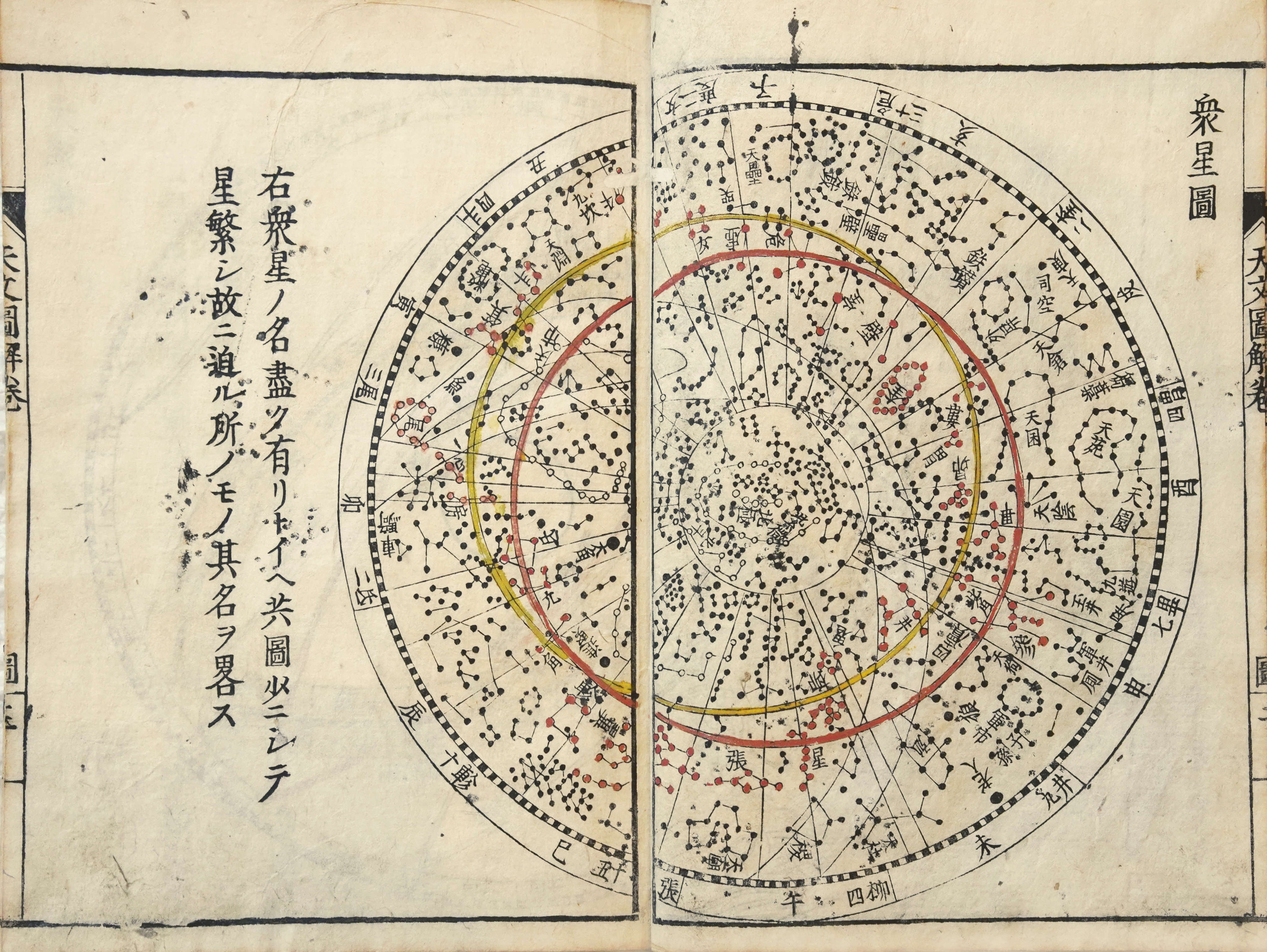Osaka, Itanya Mohee, 1689.
5 parts bound in 6 volumes 4to [222 x 160 mm] of: 32, 31, 37, 31, 33 and 54 leaves respectively.
Xylograph text in Japanese on rice paper. Handwritten annotations in red ink. Preserved in their blue original wrappers sewn in the eastern manner, calligraphed lettering-pieces on old paper added later on the front covers. Few signs of use. Stamp on the paste-down. Blue cloth protecting chemise.
Rare and precious first edition of the first astronomical book to be published in Japan.
Miyajima Kazuhiko, Japanese Celestial Cartography, S. 590 f.; Annick Horiuchi, Les mathématiques japonaises à l’époque d’Edo, 1994, p.266.
The Tenmon Zukai (explanation of astronomy by means of figures) is the work of an astronomer from Kyoto, Iguchi Tsunenori.
Tsunenori was widely influenced by his colleague researches, Shibukawa Harumi (1639-1751), who had carried out the first astronomical observations in the country in 1669. He had studied the moon, sun and planets motions, and also the eclipses, and had used those new data to draw up the first calendar in Japan, the Jokyo.
Iguchi’s work is based on the new data updated by Shibukawa Harumi, but it also denotes an influence from western astronomy conveyed by Schall and Verbiest’s works.
Divided into 5 parts, this treatise is dedicated to mathematical astronomy. It deals with planetary system and celestial motion, phases and orbits of the moon, seasons, and prediction of eclipses.
The abundant illustration comprises 50 woodcuts, including 4 double-page plates, showing the astronomical knowledge expounded in the text. Among the woodcuts, there are sky and stars maps, figures of the lunar phases and a map of the eastern hemisphere.
This map of the eastern hemisphere is influenced by the famous Matteo Ricci’s world map published in Beijin in 1602 and presented to the Ming emperor Shenzong. We know that Jesuits had sent from Beijin several copies of this map to Japan.
Iguchi’s map shows a very interesting particularity: in the south-east of Japan, the map is illustrated with two imaginary islands: Kinshima, the gold island and Ginshima, the silver island. The origin of these illustrations is not clear but we know that Dutch and Spanish navigators have vainly combed the Pacific in the 16th and 17th centuries in search for these two islands.
Fourteen woodcuts have been contemporary enhanced with colour.
« The ‘Tenmon Zukai’ is the first astronomical book published in Japan. Although all five volumes mention the study of mathematical astronomy, the first volume has circular star maps and the second has figures of the lunar lodges” (Miyajima).
A precious copy of a highly interesting astronomical work, richly illustrated, preserved in its original wrappers.
